 If you love bacon, this bacon cornbread is your new best friend. Because — bacon! It’s arguably an ingredient that can do no wrong in the culinary pop culture. Bacon-wrapped scallops, bacon-wrapped hot dogs, bacon burgers, bacon ice cream (that one might have been a misstep)– is there no food frontier that bacon hasn’t paid a visit? In any case, this cornbread does not skimp on bacon whatsoever. Let me tell you how it goes down:
If you love bacon, this bacon cornbread is your new best friend. Because — bacon! It’s arguably an ingredient that can do no wrong in the culinary pop culture. Bacon-wrapped scallops, bacon-wrapped hot dogs, bacon burgers, bacon ice cream (that one might have been a misstep)– is there no food frontier that bacon hasn’t paid a visit? In any case, this cornbread does not skimp on bacon whatsoever. Let me tell you how it goes down:
- Fry bacon in a skillet, reserve rendered bacon fat.
- While batter is in progress, heat a healthy (haha) dose of fat in a cake pan in the oven.
- Pour batter over the sizzling hot bacon grease into the cake pan.
- You didn’t think it would end there, did you? As soon as the batter fills the pan, the bacon fat begins oozing up the sides of the pan, pooling along the edge of the batter, baking into a slightly crispy, bacony crust.
- Sprinkle crumbled bacon on top of batter, because any attempt at salvaging the nutritional quality of this particular cornbread died when you poured the batter directly into a pool of crackling hot bacon fat.
Reinhart’s bacon cornbread rivals his brioche recipe in terms of unrestrained, fully saturated decadence among the recipes in The Bread Baker’s Apprentice. I would absolutely recommend this recipe to anyone tasked with bringing cornbread to a potluck or BBQ, as a way to make everyone involved hate and love you simultaneously. Even without the bacon the cornbread itself is a solid dish– dense, rich, and buttery. Realistically, this is not a bread recipe, but rather a savory sort of dessert in the brownie family. You could probably serve it for dessert with a scoop of vanilla and no one would question your decision. In the future, for non-special occasions, I’d probably reduce to just a crumble of bacon on top, and decrease the sugar and butter content overall.
Insanely Bacon Cornbread Recipe
Yield 1 (thick) 10-inch round loaf of bacon cornbread. Based on original recipe from Peter Reinhart’s The Bread Baker’s Apprentice.
Ingredients
- 1 cup coarse cornmeal
- 2 cups buttermilk (or 2 cups milk – 2 T, + 2 T vinegar)
- 8 ounces of bacon
- 1 3/4 cups (8oz) AP flour
- 1 1/2 Tbsp baking powder
- 1/2 tsp baking soda
- 1 tsp salt
- 1/4 cup brown sugar
- 1/4 cup sugar
- 3 large eggs
- 2 Tbsp honey
- 2 Tbsp unsalted butter, melted
- 1 1/2 cup fresh corn kernels
- 2 Tbsp bacon fat or vegetable oil
Procedure
- The night before (or in the morning, if you’re baking for dinner), soak the cornmeal in the buttermilk. Cover and leave at room temperature for at least 6 hours.
- When you’re ready to bake, preheat the oven to 350F. Fry the bacon until crisp, then remove to a plate lined with a paper towel to cool. Reserve the fat if you are using it to grease the bread pan! Or just reserve it for other things. Fry your turkey burgers in bacon fat to make them more delicious.
- Combine the dry ingredients (flour, baking powder, baking soda, salt and sugars) in a mixing bowl.
- In a separate bowl, dissolve the honey in the melted butter, then beat in the eggs one at a time (make sure the melted butter isn’t TOO hot at this point, or you’ll cook them. Add the cornmeal-buttermilk mixture.
- Add the wet mixture to the dry ingredients and stir with a large spoon until batter is smooth and well-blended. Stir in the corn kernels until evenly distributed (You could also stir in some crumbled bacon at this point, if you’d like to skip the bacon topping).
- Place 2 Tbsp of rendered bacon fat in a 10-in round cake pan (or 9×13 baking pan), and place the pan in the oven for 5 minutes. Remove very carefully and roll the pan around a bit to make sure that the fat covers the pan and gets into any corners. If you’re not down for the bacon fat-puddle that is about to happen, skip this step and grease the pan with butter, vegetable oil, or a very thin layer of bacon fat, applied with a paper towel or pastry brush.
- Sprinkle crumbled bacon pieces on the top.
- Bake for 30-40 minutes, or until a toothpick inserted in the center comes out clean. Allow bread to cool for at least 15 minutes before slicing it into squares, wedges, or just eating it straight from the pan.


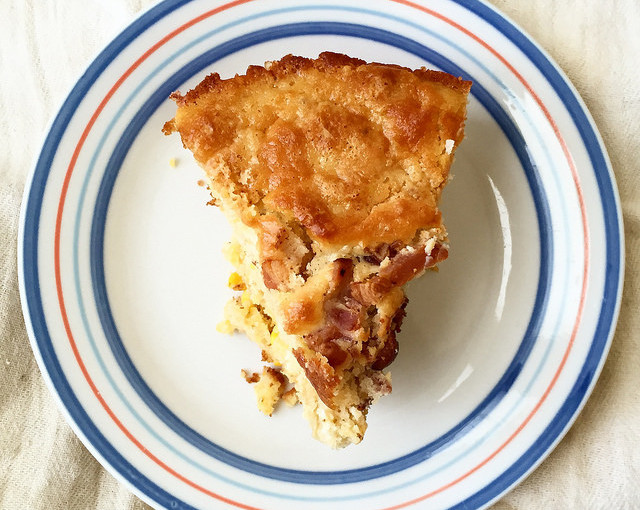

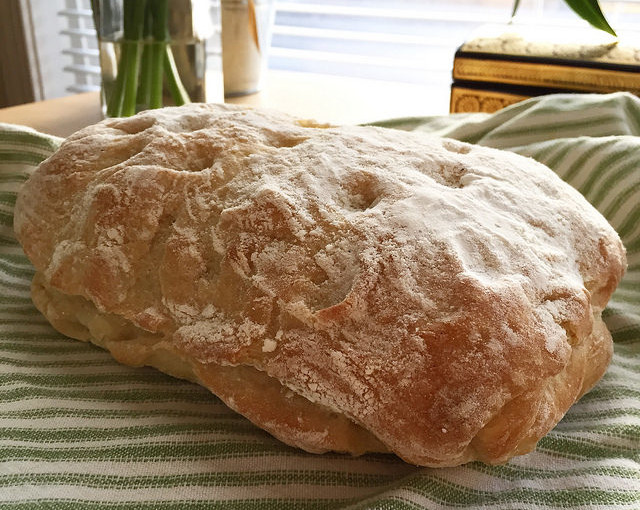





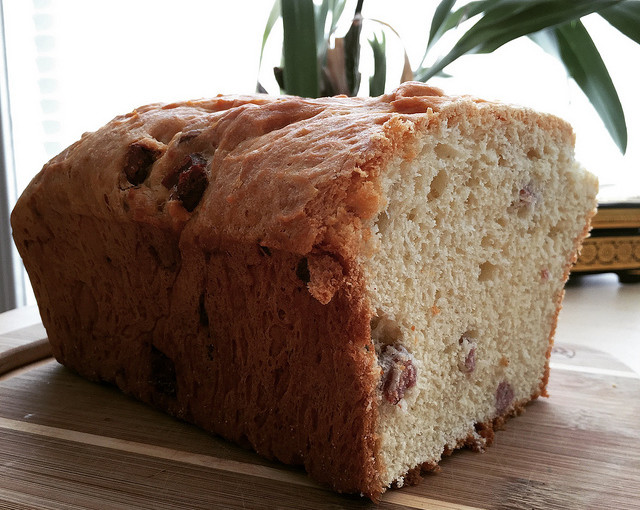




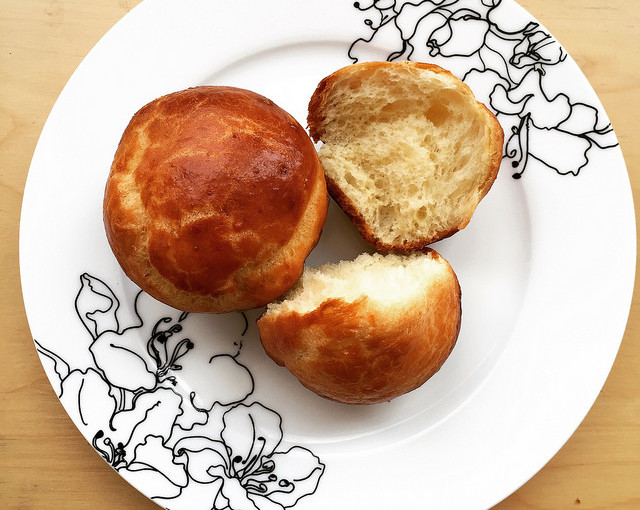





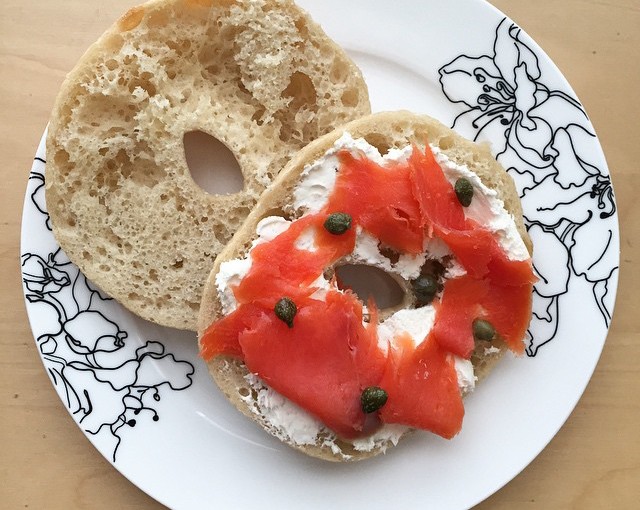


 The idea of intentionally putting dough in water is kind of weird to me. Boiling water seems so violent, and bread dough can be such a delicate substance. In the end, I find it easier to think of bagels as weird giant noodles during the boiling stage. In fact, the method used here actually has a lot in common with another favorite carb of mine: ramen. As with
The idea of intentionally putting dough in water is kind of weird to me. Boiling water seems so violent, and bread dough can be such a delicate substance. In the end, I find it easier to think of bagels as weird giant noodles during the boiling stage. In fact, the method used here actually has a lot in common with another favorite carb of mine: ramen. As with 

